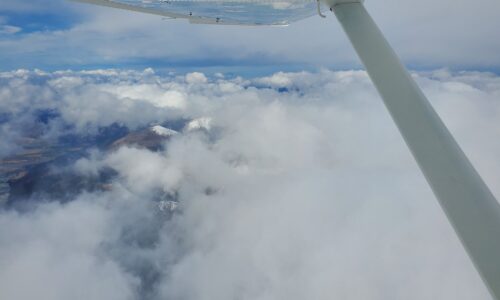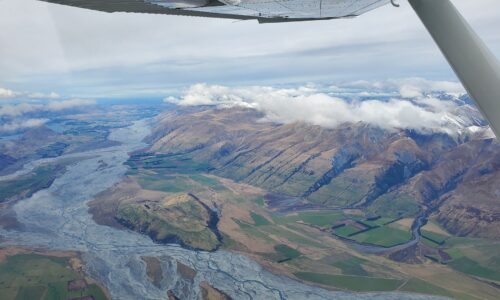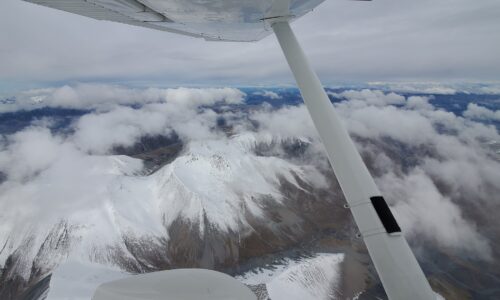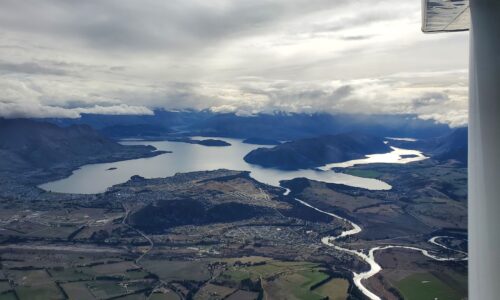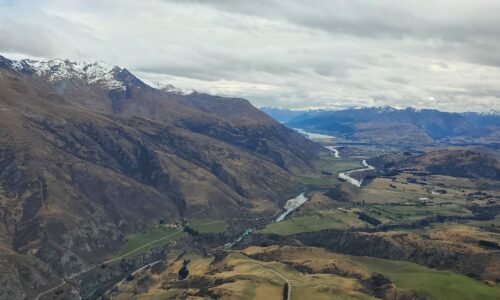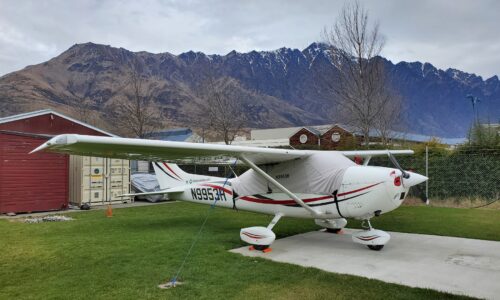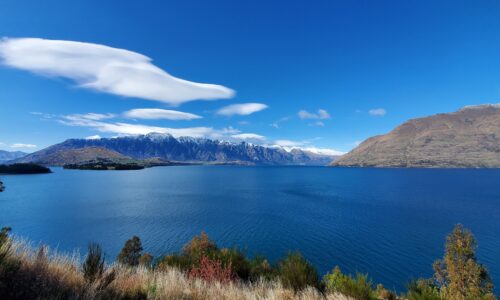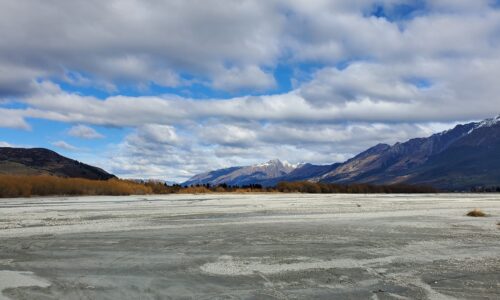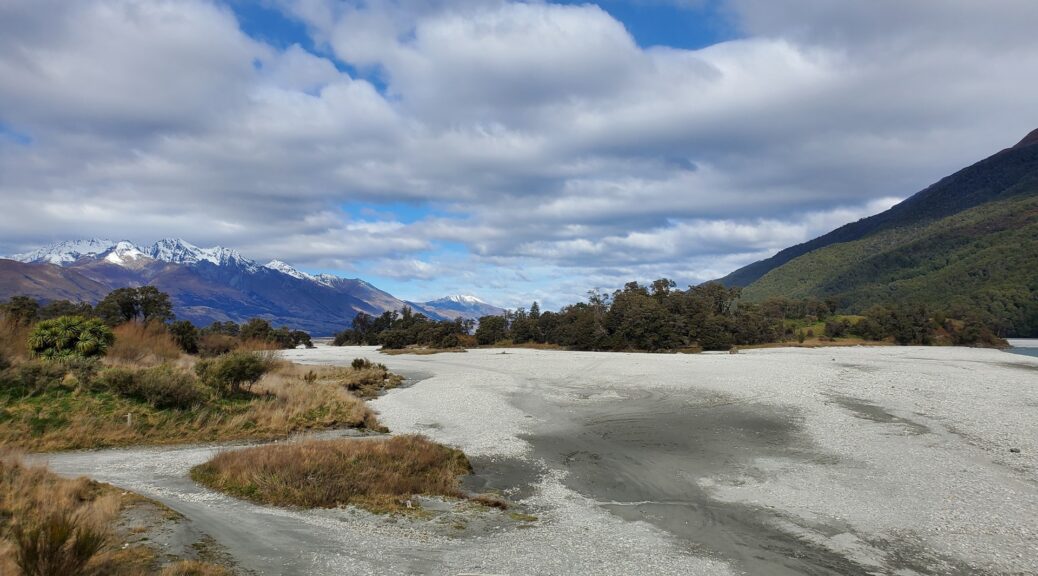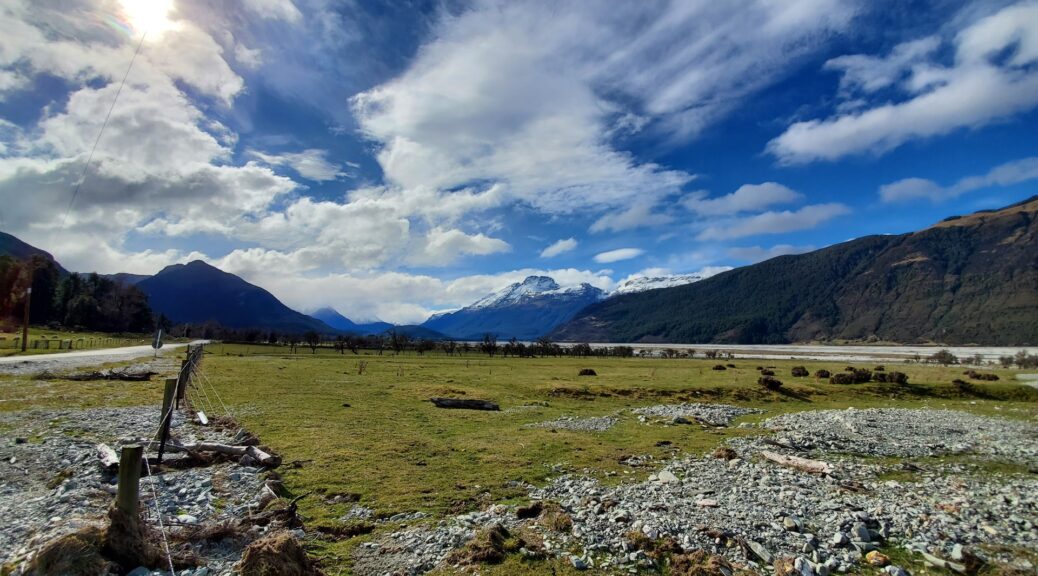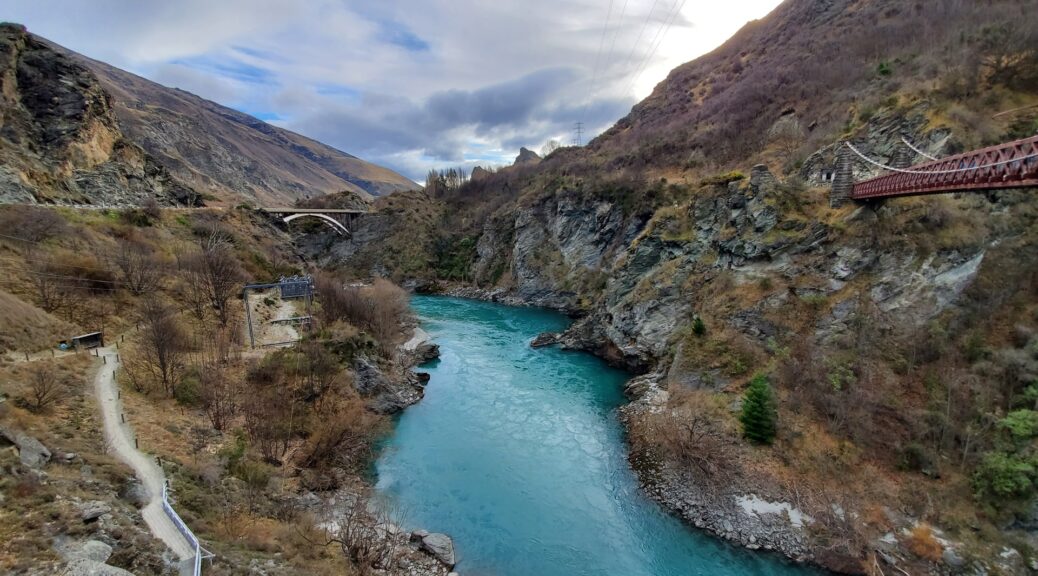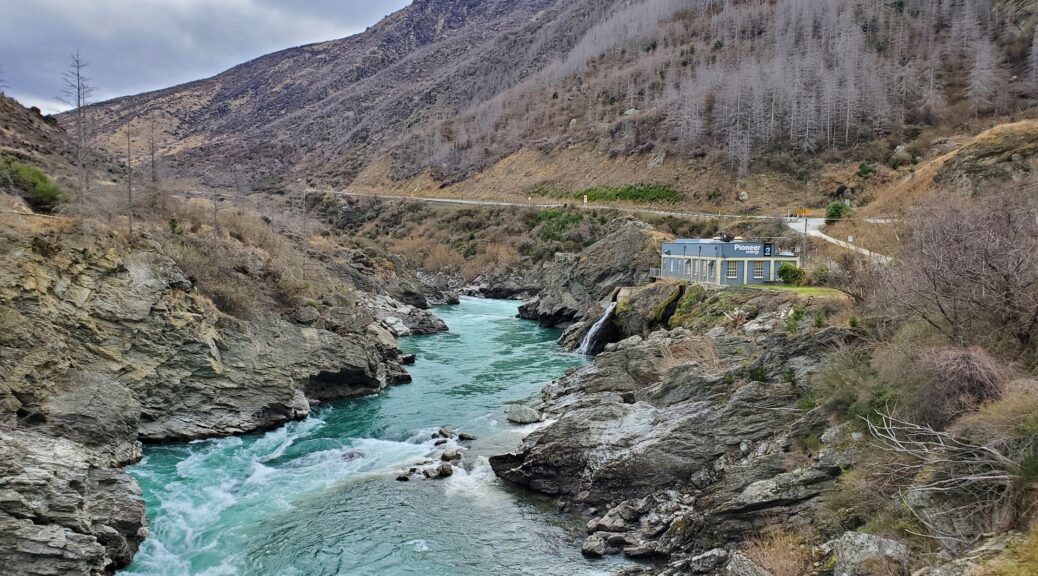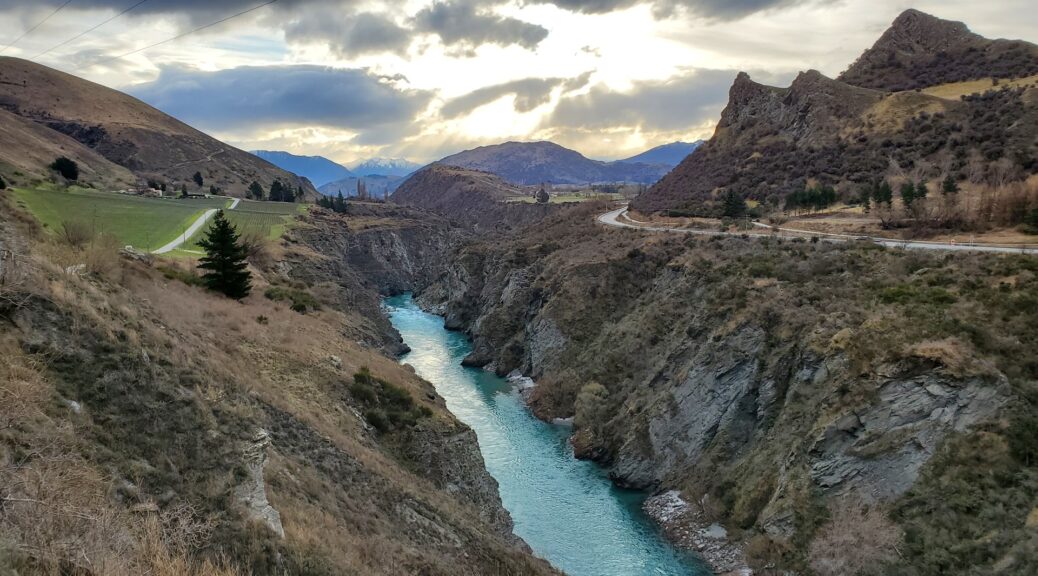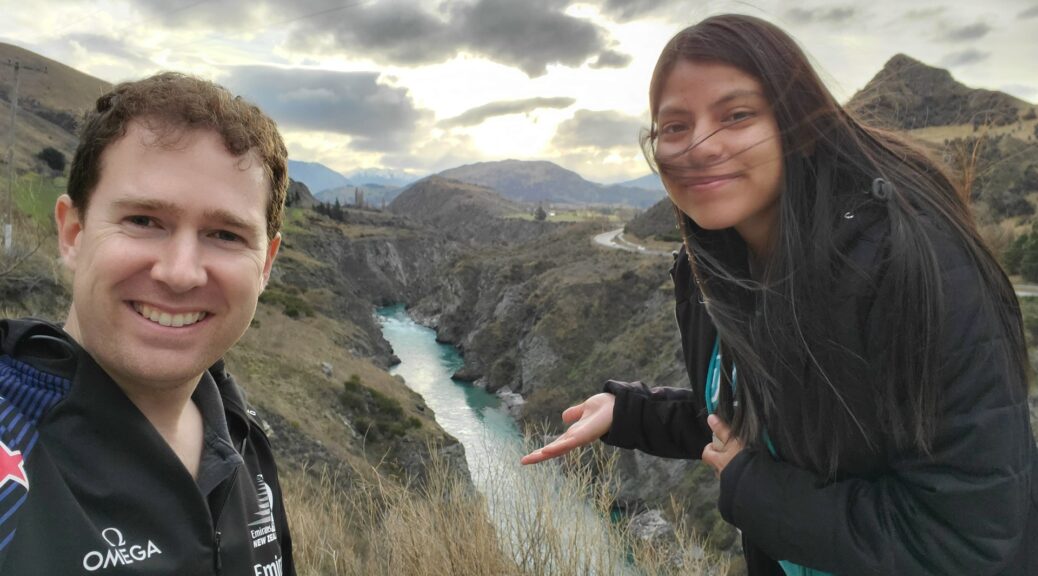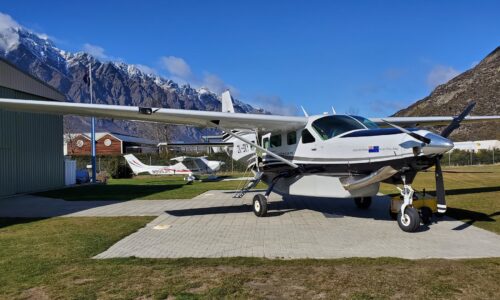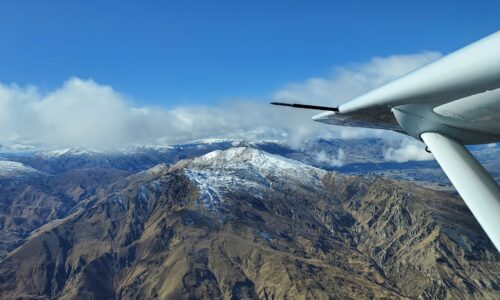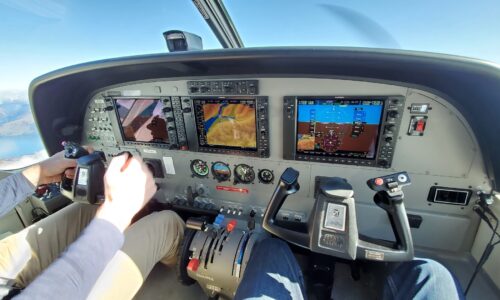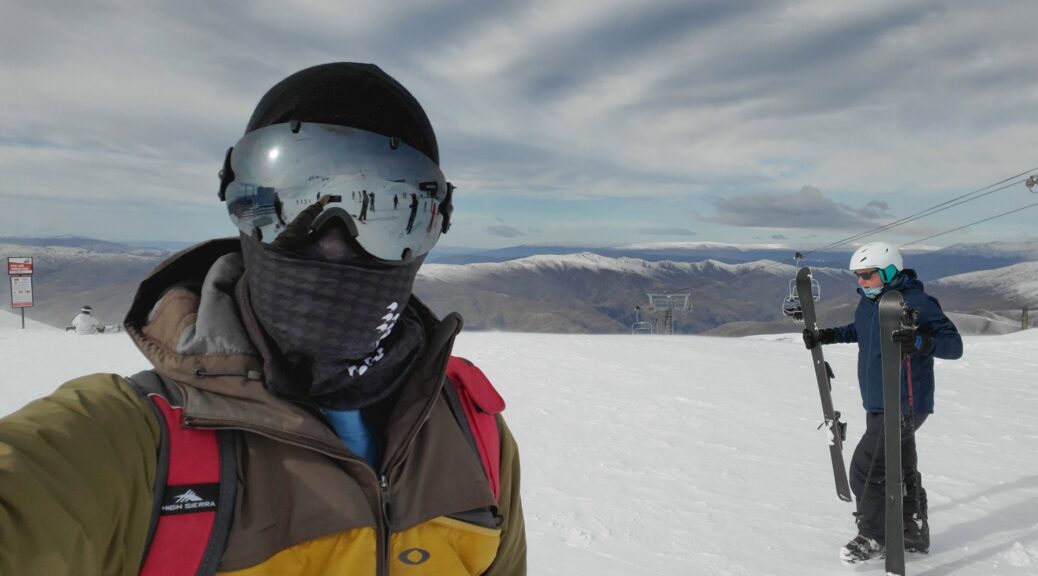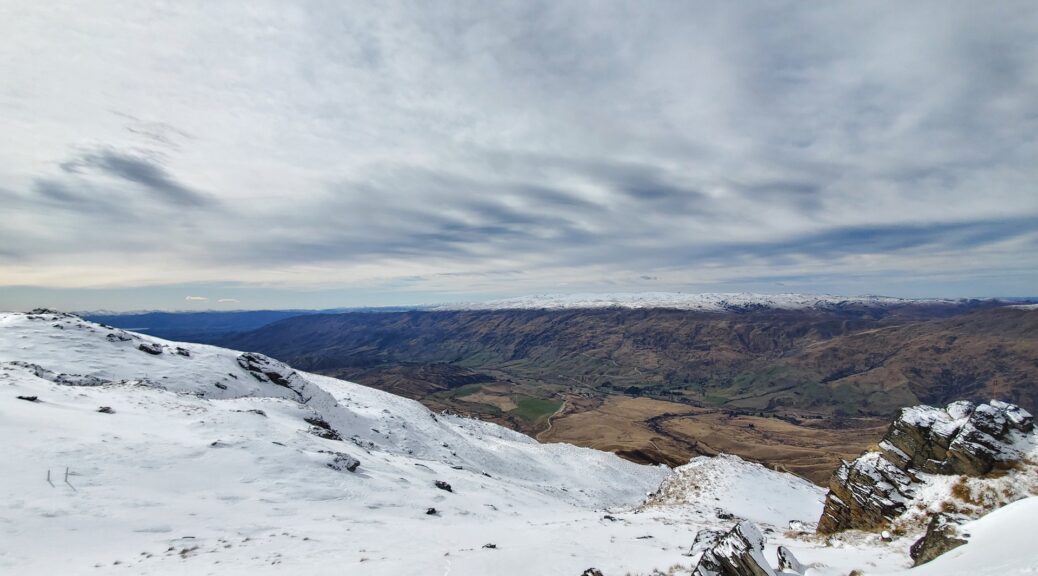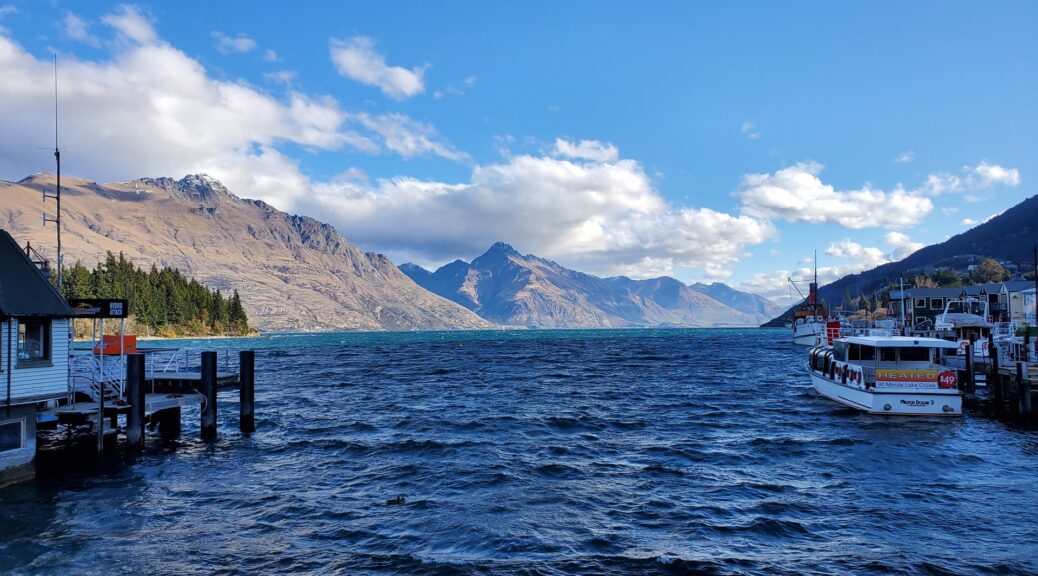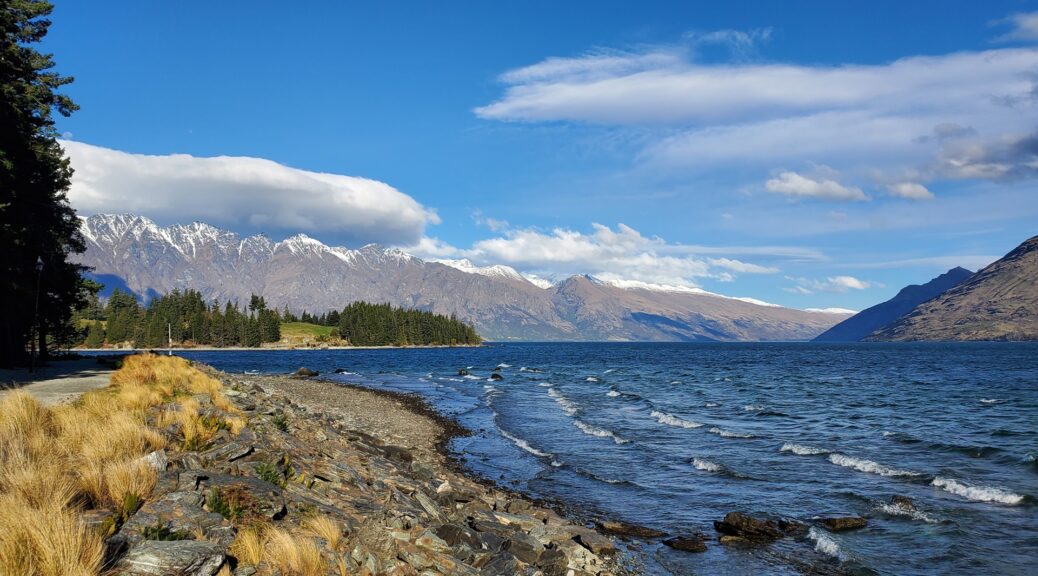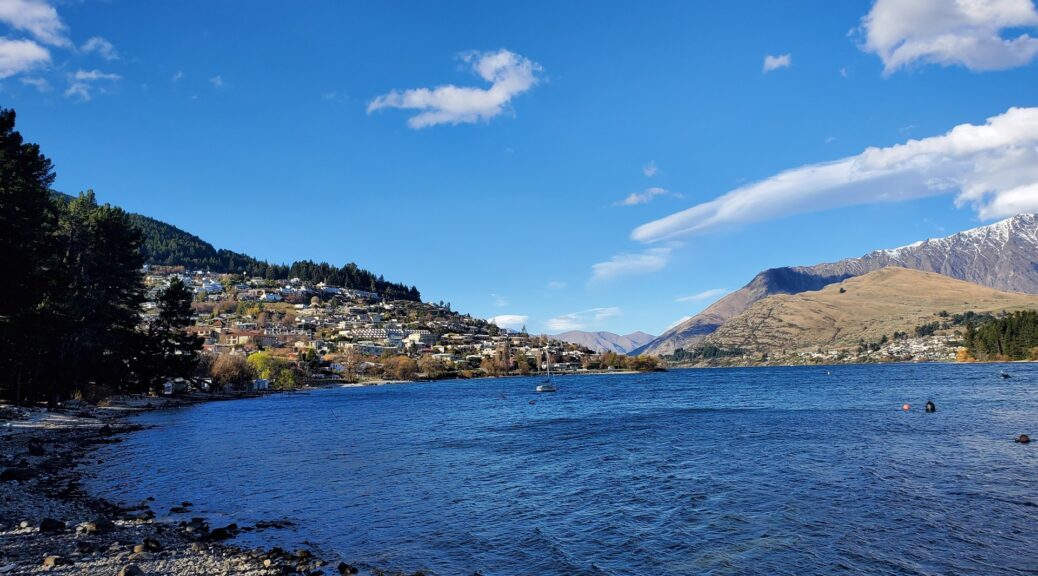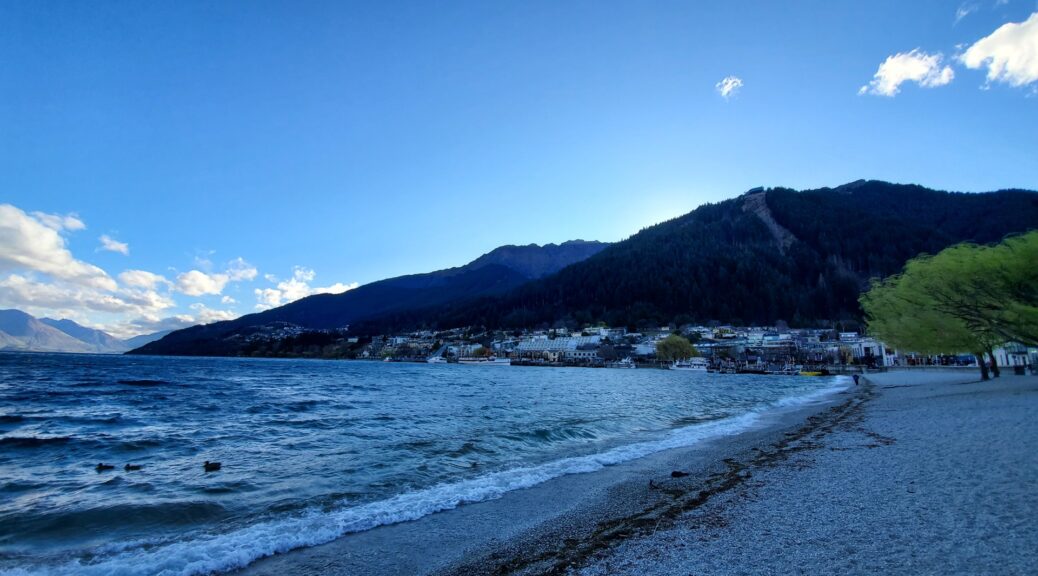Round the World – New Zealand 2, Part 3
My next destination was to be the city of Queenstown. New Zealand’s main city, Auckland, was currently under a travel ban and I was therefore expecting Queenstown to be fairly quiet; my suspicions turned out to be correct. I still had plenty of fuel on board after my flight down from the North Island so I set straight off from Nelson, on a direct track to Queenstown.

The terrain south of Nelson rapidly becomes mountainous. On this morning there was a fair amount of cloud around, so I made sure to climb hard and get well above the elevation of the mountains before setting the autopilot, destination Queenstown.
I made my way up to 11,500ft, clear of the highest mountains around, and also high enough to be out of the majority of the turbulence caused by wind spilling over the hilltops. Less turbulence doesn’t just mean a smoother ride for the occupants, it also means that the autopilot has to work much less, if you don’t fancy hand flying all the way. Servo rebuilds are not cheap so reducing the load on your autopilot is always a good thing; it also means less likelihood of failure at an inopportune time!
I began my descent a little before reaching Wanaka. There was a little cloud around Queenstown and it would be easier to be below any layers. I flew a visual approach down the valley that leads past Cardrona, popping out into the main Kawarau river valley that runs downhill from Queenstown. I was cleared to land straight in and touched down on the westerly runway. Given that this was not my first visit, finding the visitor parking was straightforward, and I parked in the same spot as I did back in February before shutting down.
Before turning off the master switch I noticed that an unusual noise was coming from the port wing. There’s not much in the wings that can make a noise; only the flap motor, and the fuel pumps for the tip tanks. The flaps were not moving, and the fuel pump motors were off. I turned the power on and off a few times but the noise remained whenever the power was on. I walked over to a hangar that had some men outside it working on a helicopter, and they pointed me in the direction of Air Milford, operators of a Cessna 185 that the helicopter workers thought would be similar enough to my Cessna 182 for them to have the right skills.
I was greeted at Air Milford by a hangar hand who took me through to the office and introduced me to the owner, Hank. It seemed like most of the rest of the staff were around too, and all said hello. Although we had never met, Hank was already familiar with me; back in February he’d been the pilot of one of the aircraft in the conga line I’d followed in to Queenstown after the Milford fly-over, and had been the one to compliment me on how accurately I’d followed the procedures (very kind of him). He had me bring the aircraft over so that we could take a look.
While waiting for Hank to join me I pulled off a trim piece under the wing and figured out the issue. The stall warning horn was stuck “half-on”, so it was making a very different noise to how it would when announcing a stall. When the stall warning tab was flipped up and down a few times the issue went away. We treated the problem with some water displacing spray. Hank offered me use of their tie-down pad for the duration of my stay and one of the team gave me a ride into the town.
Queenstown was fairly empty. The owner of the hostel that I booked into for the week mentioned that I was the “cherry on a really shitty cake of a day”, which he apparently meant as a compliment; Auckland’s travel restrictions had just been extended so my week-long booking had come in at the end of a long string of cancellations. A couple of days into my stay I teamed up with a British backpacker, Jess, who was staying in the same hostel; we rented a car for the day to get out of the city for a day and visit some nearby scenic locations, including a couple which were used for film sites in Lord of the Rings.
We first drove west along the shore of Lake Wakatipu towards Glenorchy. Regular stops were essential to enjoy the views and take photographs, but this seems to be the case for almost every drive on the South Island of New Zealand. After stopping in a cafe in Glenorchy for breakfast we pushed on north to our first planned location for the day; the Isengard lookout. The wind was roaring down the valley and it wasn’t long before my ears were throbbing. To be entirely honest it was a long time since I had seen the Lord of the Rings films, and I can’t claim that any of the mountain range looked familiar to me. It was an impressive vista nonetheless.
From here we drove back into Queenstown, and out the other side, following the Kawarau river down the valley which it has carved out, flowing east out of the town. Our first stop on the route was the Kawarau bridge, home of the world’s first commercial bungy jump operation. The bridge was completed in 1880, greatly easing access to the Central Otago gold fields, and is 43 meters above the Kawarau river. The commercial operation kicked off in 1988, for the princely sum of NZ$75, quite a sum of money at the time. I still have no desire to try one.
Continuing down the river brought us to “Roaring Meg”. This is a power scheme consisting of two small hydroelectric plants fed from the 10 meter high Roaring Meg dam, 2 miles up Roaring Meg stream. The combined output of both stations, upper and lower, is a little over 4MW. We turned around after Roaring Meg and headed back upstream to our final stop, the viewing point for the Pillars of the Kings. Although the pillars themselves are of course mostly computer generated (although some shots used models), the terrain around is actually quite recognisable. To get to the viewing point, one must take a somewhat dubious gravel road away from the main highway, which is in fact the entrance to a vineyard.
The next morning I drove out to the airport, using the final hours of my car rental, to visit the team at Air Milford again. I wanted to fly into Milford Sound airport, having only flown overhead it back in February, and one of the requirements for this is to receive a briefing on how to fly in, from an approved operator. Air Milford had kindly offered to provide this briefing to me. I sat down with Ant, Hank’s son, who led me through the preferred routes and procedures, before letting me know that he was going to fly one of their Cessna Caravans into the sound shortly; would I like to come along in the copilot seat? Yes, yes I would!
Given the border situation, all the passengers were NZ residents. Most of them had lived in NZ all their lives, and despite being in their 40s and 50s had never visited Milford. It was good to know that Kiwis were getting out and about to see the country; some of those in the business told me that overall, they were only seeing about a 10% reduction in trade compared to a normal year.
The Cessna Caravan was a real change from the 182! Despite the obvious size difference, they apparently fly in a very similar manner, but the switch to turbine power makes the entire experience very smooth and simple, not to mention the additional horsepower available. The aircraft climbed up above the hills like it was in an elevator, and we headed off straight along the preferred route that Ant had briefed me about. Despite not cruising much faster than the 182, it felt like it took almost no time before we were descending into Milford Sound.
The approach is great fun; a descent along the northern edge of the sound, turning back at the mouth to set up for the approach. Ant demonstrated the excellent glide performance of the Caravan; at an altitude of just a few thousand feet, there’s enough glide available to fly the entire 15 km length of the sound and touch down on the runway. Today, the wind favoured landing from the other direction, so we flew a downwind leg and a tight base turn, down thousands of feet below the surrounding cliffs.
I had never been into Milford Sound, so I decided to join the tourists on the boat trip. The pictures say more about it than I can.
It’s a 6 hour coach journey, one way, between Queenstown and Milford Sound. The pilots of the tourist flights tout for business from those boarding the bus after the cruises, and thinking about the 6 hour journey that they’ve already done once in the opposite direction. A 30 minute flight clearly looks very appealing. We picked up a couple of new passengers, who told us they were nervous about flying, but were convinced by the fact that we had two pilots on board. Taking me along had paid off!
The flight back was smooth, with a scenic flyover of Lake Quill and the Sutherland Falls. It was enjoyable to fly through the area with an expert like Ant and get the guided tour, learning about the history and geography of the area. Before long we were touching down at Queenstown again and my Caravan adventure was at an end.
The main reason I had chosen Queenstown as a destination, next to the chance to get a Milford Sound briefing, were the ski fields surrounding the city. It had been many year since I had been skiing and I was keen to give it a try again. The hostel I was staying at had ski gear available for rental, so I sorted out the required equipment and organised a one day pass. It was a 6:30am departure from in front of the hostel!
The drive up to the Cardrona resort took a little under an hour. The resort was quite busy, with Kiwis flocking to the slopes to fill the hole left by the absence of the normal Australian tourists. It was a windy day, and I managed a couple of hours of skiing before the resort was closed down because of the weather. The resort issued passes for anyone who wished to return the following day; I did so, but despite a more favourable forecast the lifts never opened at all! Not the most successful skiing expedition, but at least I had confirmed that I had not forgotten how to do it.
On my last day in Queenstown, I took a walk around the town and enjoyed some views of the lake. Not many people were around, maybe because of the strong an icy wind blowing from the west. I did see what appeared to be a small killer whale plying amongst the mooring buoys, too far away to get a decent picture of; closer inspection revealed it to be a no-doubt very expensive motorized toy, like a jet ski but far fancier and able to submerge. It looked like a lot of fun and probably caused a fair amount of confusion for those who caught only a glimpse of it!
That evening I prepared my flight plan for the following day. It was time to head back to Auckland for a while.
Click here to read the next part of the story.


